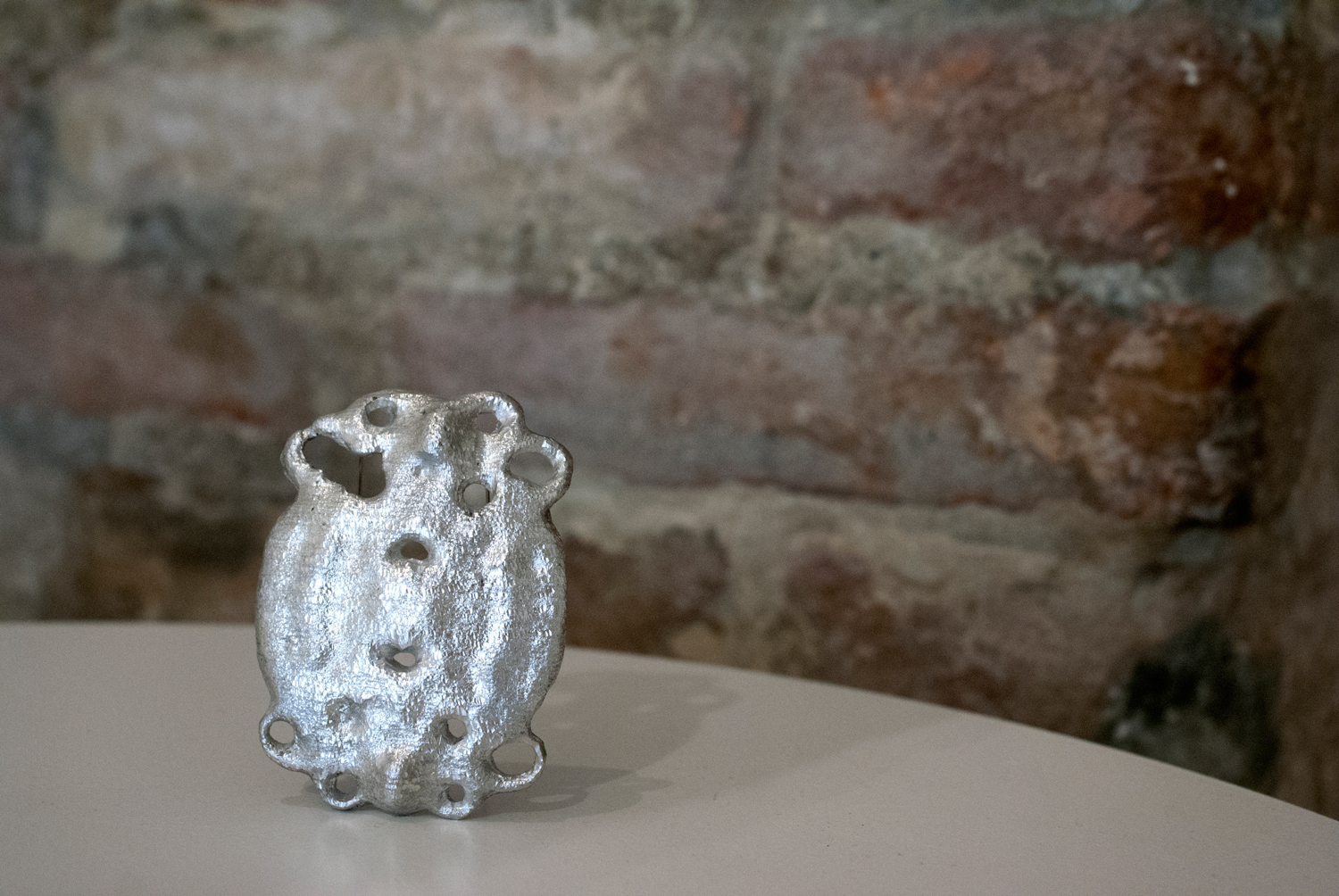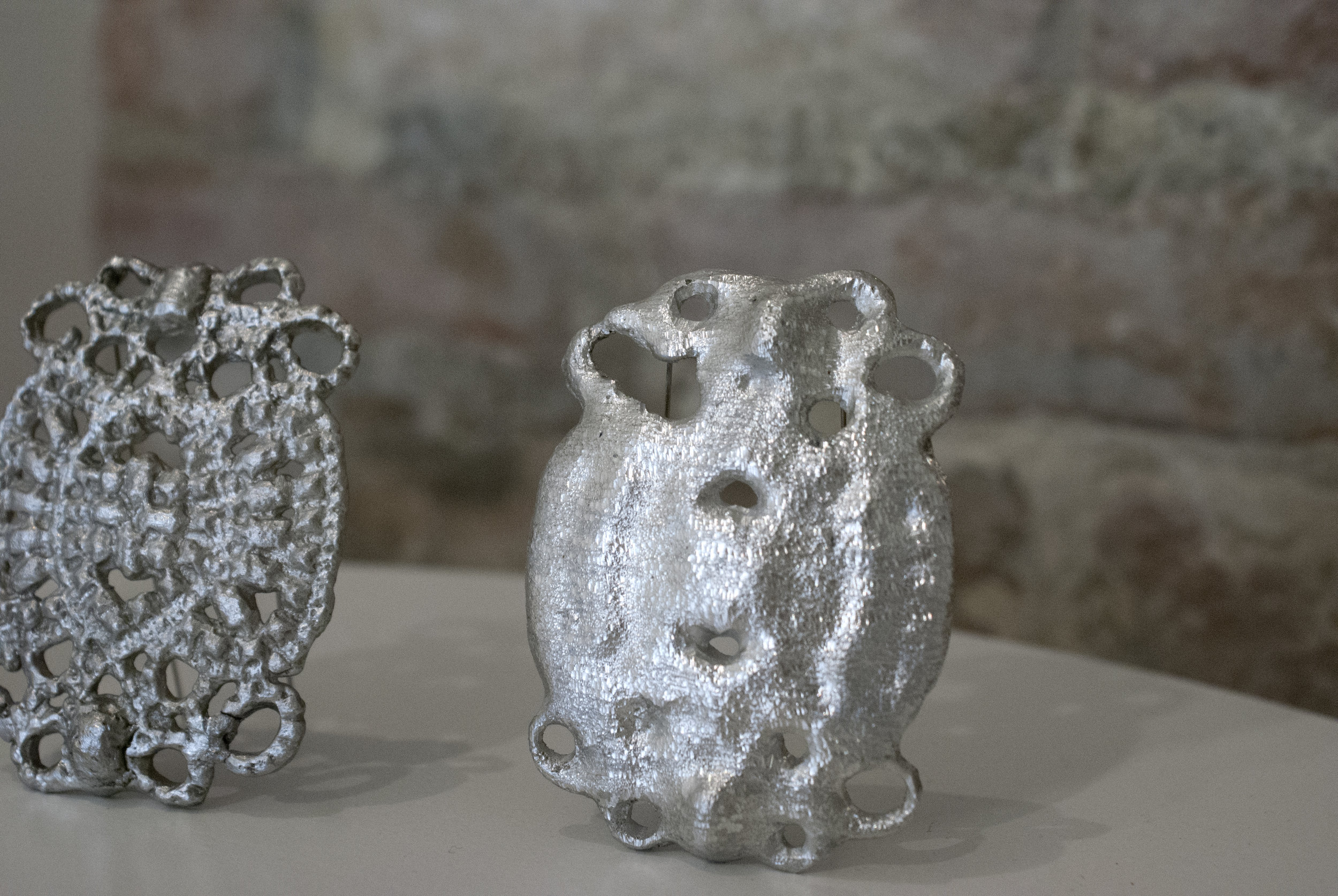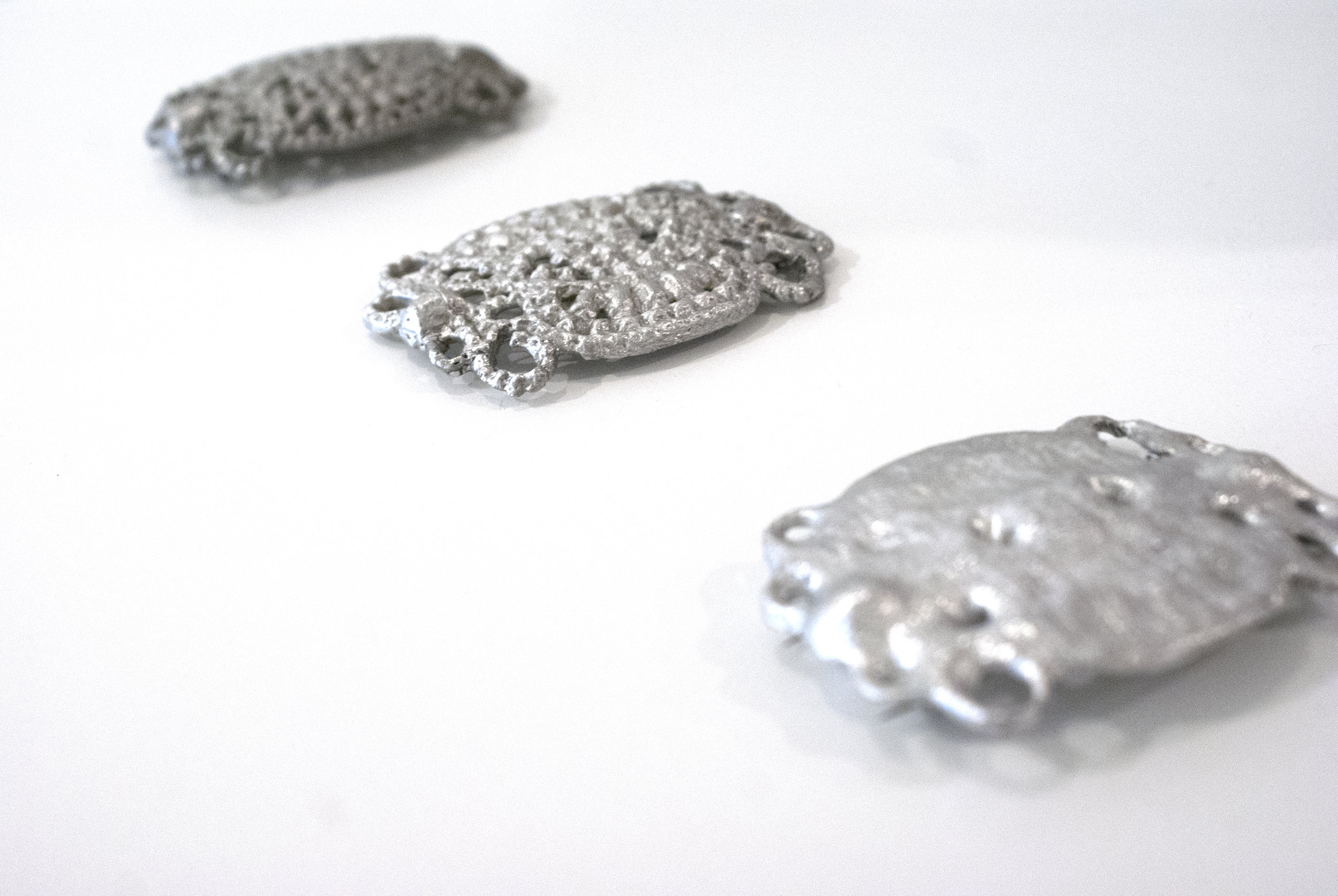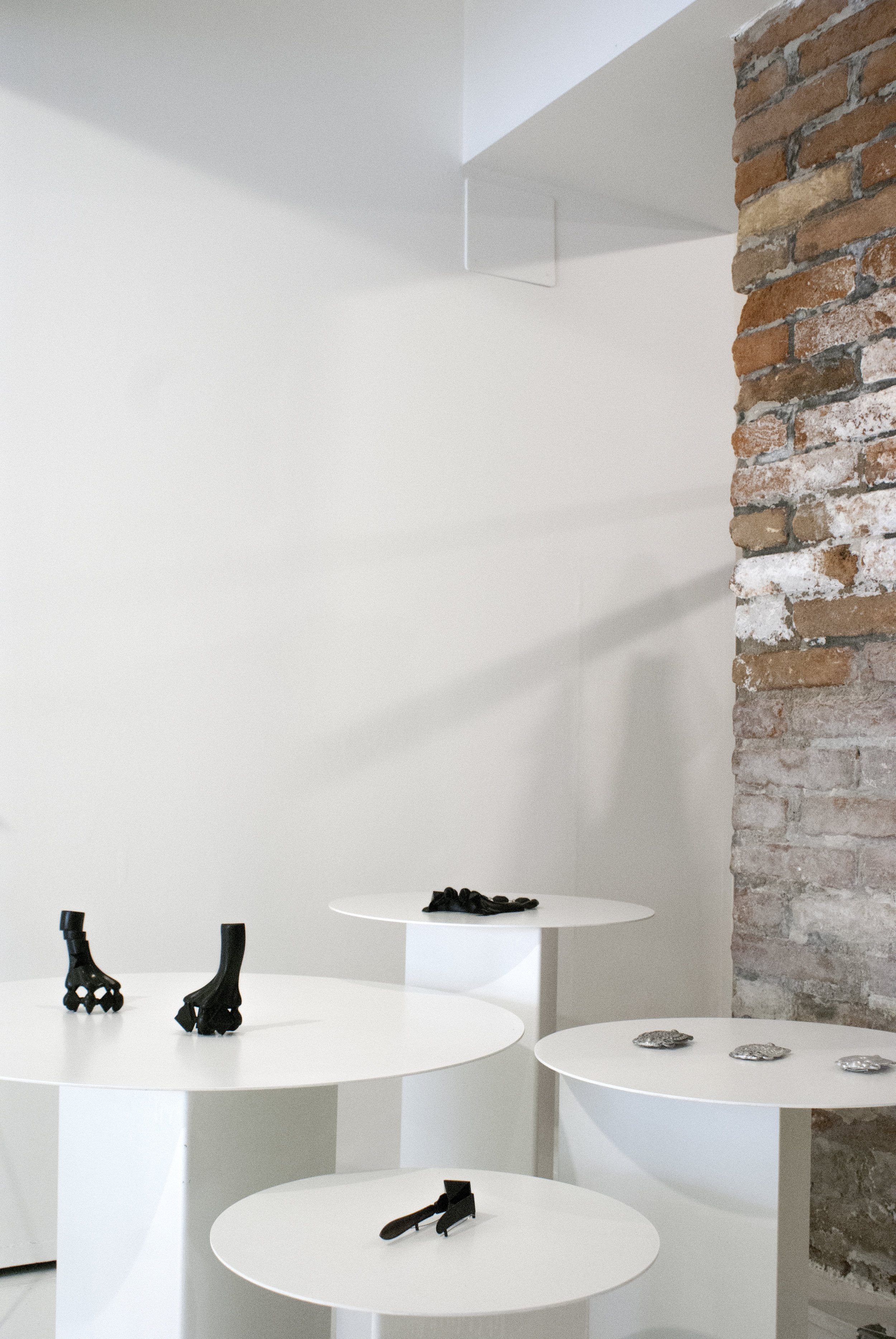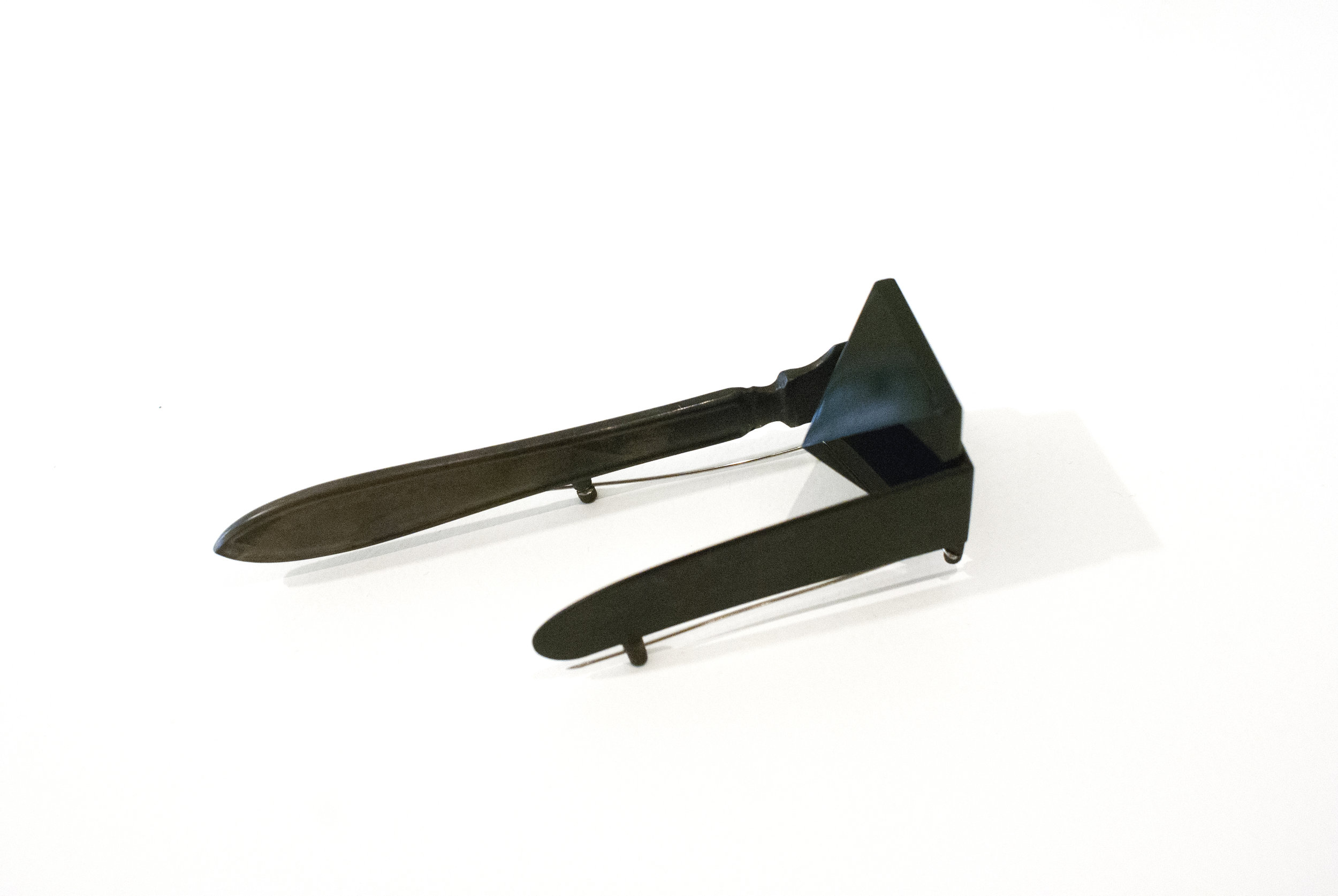ISLAND #2: ANNIKA PETTERSSON
Annika Pettersson’s work lays between the parallel languages of jewelry and sculpture.
In her hands an object of the world is transformed in something twofold: first we recognize a familiar structure, second, wonder bends toward us and we let go of our need to know. The action of deconstruction in her practice works as a displacement producing a gap, a semantic mayhem.
ISLAND 2 presents pieces from three different series: Enchantmen, The Cutting Edge and Glitch In The Copy.
In the first one (Enchantmen) she chose to work with a baroque ornamented wood chair from the 1910. To make sense of this object she started cutting it with a Japanese hand saw and then rebuilt it in form of jewelry pieces, adding pyramid shaped obsidian stones. In her work we see how contemporary jewelry serves as a means to explore cultural themes expressed through everyday objects. All her pieces are not just objet trouvé, we see the process, the movement, the action they engaged with.
The second series (The Cutting Edge) was born from the bigger project “The Jewelry Dinner” (www.jewelrydinner.com), a platform for contemporary jewelry first initiated by Pettersson and jeweler Mia Maljojoki in 2016.
The project is characterized by many aspects and exists as a performance that consists in having a group of people invited to have dinner together while wearing a piece of contemporary jewelry and discussing about a specific topic starting from the connection between two thematics: food and jewelry. Our memory goes back to Judy Chicago and her cult installation “The Dinner Party” where the artist crafted elaborate place settings for 39 female figures from the history of western civilization using ceramics, needlework, drawing, painting and sculpture.
As mouth takes in food, what can our eyes devour?
At a formal level, The Cutting Edge is composed of a series of brooches and necklaces that refers to the tradition of cutlery jewelry, nodding to the amateurism of that phenomena. The cutleries Pettersson chose to work with are exclusively knives. The attention toward the materiality of silver objects is similar to Cornelia Parker’s in her piece “Thirty Pieces of Silver” where she transformed (through a violent action) familiar objects into mysterious (but beautiful) ones.
Once again, like with the chair in Enchantmen, in The Cutting Edge we still recognize the transformed silver artefacts even if its flatness is now bended and once again, embraces obsidian to give the jewellery a duality of materiality and to emphasize the jewelry quality in the pieces. The artist writes that “obsidian itself it has in the past been used as a cutting and piercing tool and it has even been used as a surgical scalpel blade” demonstrating how her formal conceptual approach adds intellectual power to the finished piece, making us enter into the story that the artist wants to tell. From the dining room to the living room to the whole house.
The third series is called Glitch In The Copy. The artist here uses the power of digital and the concept of copying as a creative gesture to reinterpret and transform a brooch into a sequence of brooches based on the erosion of the concept of uniqueness of the initial one. A known thing enters the realm of abstraction bringing into being seemingly identical copies of itself.
For this reason the sequence could be experienced cinematographically: as we proceed slowly, we notice that every piece has slight differences between one another. Each copy of the brooch differs as each has been “photocopied” individually, and we start to experience every brooch as an image: the erosion of uniqueness in fact refers back to the duplicative nature of photography.
Glitch In The Copy is composed by objects of beauty characterized by a rigor that invites us to wonder if the disruption in it will (hopefully) happen in our heads too.





